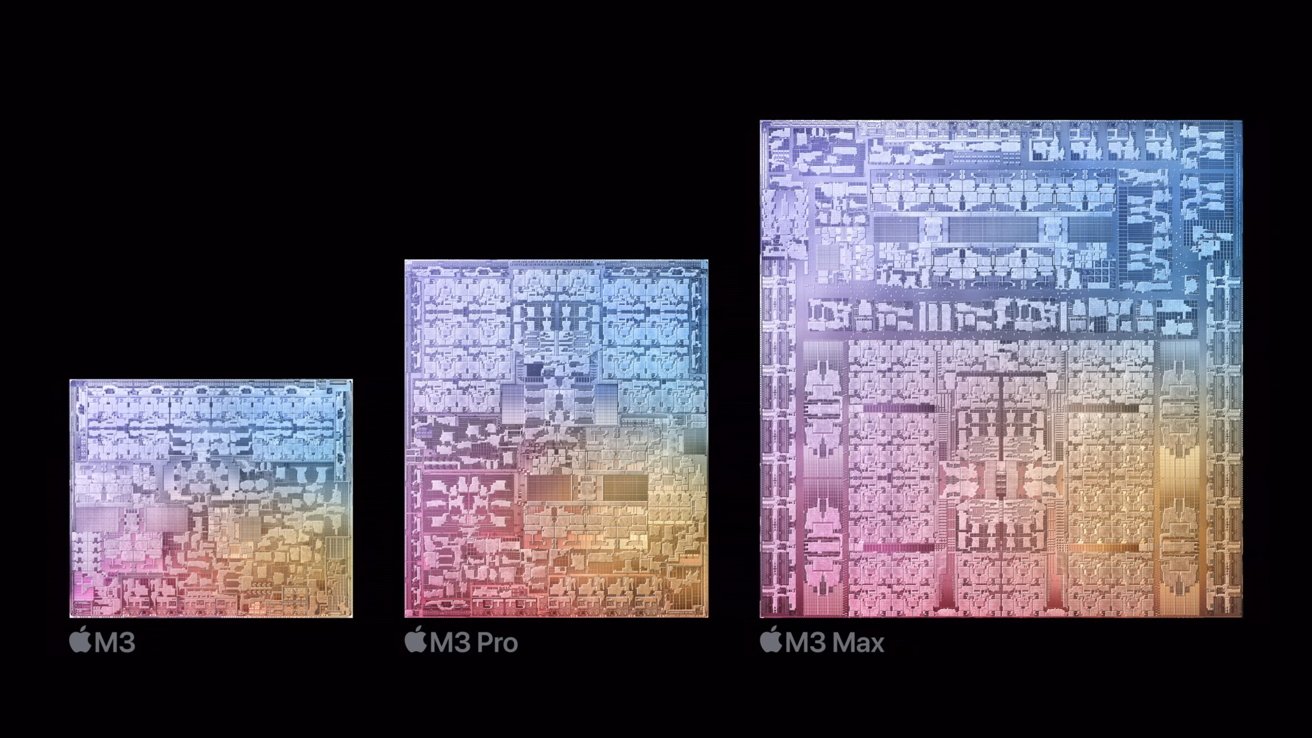Apple to get TSMC's initial 2nm capacity, says obvious report
A new rumor suggests that Apple has already queued up for the majority of TSMC's early 2nm production, but it is perhaps the most obvious report to come out of the supply chain yet.

M3 is built with the 3nm process
Apple saturated TSMC's 3nm production with its A17 Pro and M3 processor family, so the company no doubt has plans to do it again for the next process. The 2nm generation may not arrive for some time, however, as it's not expected to go into production until 2025.
According to a Digitimes headline flagged for release on January 25, Apple will get TSMC's initial 2nm capacity. Previous rumors suggest this would be for the iPhone 17 Pro lineup due in late 2025.
Sometimes, supply chain rumors are a little too on the nose, like a weatherman predicting warm weather in the summer. We didn't need an official report to know it was true.
We'll hear more about Apple's investment in the 2nm process as we get closer to 2025. For now, M3 still needs to reveal an Ultra tier in the 3nm process.
Rumor Score: Likely
Read on AppleInsider

Comments
Intel has claimed they will leapfrog TSMC and come out with their 2nm process later this year. I’ll believe it when I see it, though, since intel’s track record hasn’t been very good.
https://www.tomshardware.com/tech-industry/manufacturing/tsmc-charts-a-course-to-trillion-transistor-chips-eyes-monolithic-chips-with-200-billion-transistors-built-on-1nm-node
Next ones are 1.4nm, 1nm and they are starting to use Angstroms (=0.1nm) so A14, A10.
This sites says there's research for going below 1nm:
https://www.tomshardware.com/news/imec-reveals-sub-1nm-transistor-roadmap-3d-stacked-cmos-20-plans
But, a Silicon atom is 0.2nm so they aren't planning to scale down linearly after 1nm and instead scale out in 3D with stacks. This would allow more transistors in the same footprint but there's also the issue of power draw. Adding 3 stacks can get 3x the power in the same size of chip but if it's using 3x the power then it's no good for consumer chips.
It will get extremely expensive to invest in that kind of density of chip production. 2nm = $28b.
There won't be such a big consumer demand for it when chips reach that level. More of the demand will be for servers as power vs footprint is important.
Consumer chips could easily stop at 1nm. This would be Macbook Air equivalent to M3 Max and Max chip equivalent to a desktop Nvidia 4090, around 2030.
Suspect we may see a continuation of more cores per chip, cores dedicated for specific uses, and multi-chip implementations. I understand some data center servers now have 8 or so GPUs for AI/ML functions, paired with 2 or so CPUs for traditional workloads. Amazon, Microsoft, Google and other hyper-scalers have been designing their own chips and servers, in some cases for 5-10 years.
Some chip designers have roadmaps of planned future chips. Several have experienced longer delays between planned generations in more recent years. For many home users, improved performance may not be needed, especially for applications like web browsing, spreadsheets, document creation and emails.